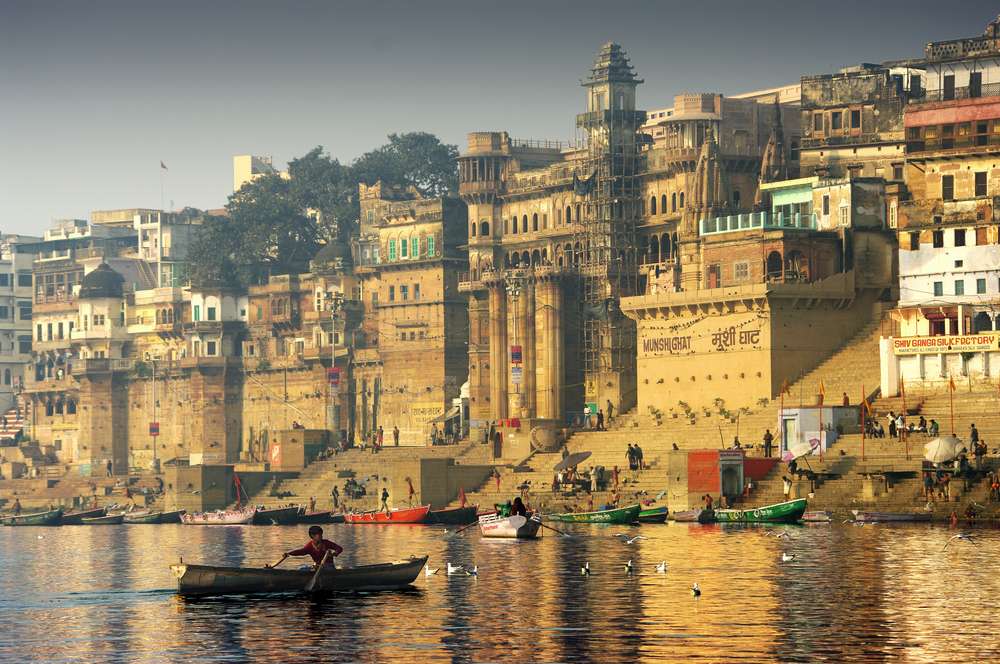India, often referred to as the “Land of Temples,” is a treasure trove of religious diversity and architectural marvels. The country is home to a multitude of temples, each steeped in history, spirituality, and unique architectural styles. These temples not only serve as places of worship but also offer a glimpse into India’s rich religious heritage. In this article, we will embark on a journey through some of the prominent temple trails in India, exploring the cultural, historical, and spiritual significance they hold.
INDIAN VISA FOR CANADIAN CITIZENS
The Golden Triangle: Delhi, Agra, and Jaipur
The Golden Triangle, encompassing Delhi, Agra, and Jaipur, is a popular temple trail that showcases the architectural splendors and religious diversity of North India.
Lotus Temple (Delhi): The Lotus Temple, an architectural masterpiece, is shaped like a lotus flower. It’s a symbol of the Bahá’í Faith and promotes unity among all religions.
Akshardham Temple (Delhi): Akshardham Temple is a stunning example of modern temple architecture. It features intricate carvings and a captivating light and sound show that narrates Indian history.
Akbar’s Tomb and Fatehpur Sikri (Agra): While not a temple, Akbar’s Tomb and the abandoned city of Fatehpur Sikri offer insights into the Mughal era’s architectural and religious influences.
Birla Mandir (Jaipur): The Birla Mandir, dedicated to Lord Vishnu and Goddess Lakshmi, is a magnificent white marble temple that stands as a symbol of peace and purity.
Tamil Nadu: The Land of Temples
Tamil Nadu, in South India, is renowned for its temples, each reflecting Dravidian architecture and rich religious traditions.
Meenakshi Amman Temple (Madurai): The Meenakshi Amman Temple is an architectural marvel dedicated to Goddess Meenakshi and Lord Sundareswarar. It’s known for its intricate sculptures and vibrant gopurams (entrance towers).
Brihadeeswarar Temple (Thanjavur): Also known as the Big Temple, this UNESCO World Heritage Site is dedicated to Lord Shiva. Its towering vimana (temple tower) is an architectural wonder.
Ramanathaswamy Temple (Rameswaram): A significant pilgrimage site for Hindus, the Ramanathaswamy Temple is associated with Lord Rama. It features long corridors and a sacred water tank for ritual baths.
The Himalayan Temples: Devotion Amidst the Peaks
The Himalayas, the majestic mountain range in the north, is dotted with temples that offer spiritual solace in the lap of nature.
Kedarnath Temple (Uttarakhand): Situated at a height of 3,583 meters, Kedarnath Temple is dedicated to Lord Shiva. Pilgrims undertake a challenging trek to seek the deity’s blessings.
Baijnath Temple (Himachal Pradesh): The Baijnath Temple, dedicated to Lord Shiva, is an ancient structure that showcases intricate carvings and is surrounded by the Dhauladhar range.
Jageshwar Temple (Uttarakhand): The Jageshwar Temple complex is dedicated to Lord Shiva and features over 100 temples renowned for their stone carvings and religious significance.
INDIAN VISA AIRPORTS FOR ENTRY
Khajuraho: A Marvel of Erotica and Spirituality
Khajuraho, in Madhya Pradesh, is famous for its group of Hindu and Jain temples known for their exquisite carvings and sculptures.
Kandariya Mahadeva Temple: This temple, dedicated to Lord Shiva, is the largest and most ornate among the Khajuraho temples. Its intricate carvings depict various aspects of human life.
Lakshmana Temple: Built in the 10th century, the Lakshmana Temple is dedicated to Lord Vishnu. It’s known for its magnificent architecture and detailed carvings.
Gujarat: Land of Temples and Spirituality
Gujarat, in western India, is home to temples that exemplify the vibrant culture and religious fervor of the state.
Somnath Temple (Veraval): One of the twelve Jyotirlinga shrines of Lord Shiva, the Somnath Temple is a masterpiece of ancient architecture and an important pilgrimage site.
Dwarkadhish Temple (Dwarka): Dwarkadhish Temple is dedicated to Lord Krishna and is considered one of the Char Dham pilgrimage sites in Hinduism.
In Conclusion
India’s temple trails offer a fascinating journey through the country’s religious and architectural heritage. These temples, with their unique designs and historical significance, provide insights into the diverse religious practices and beliefs that have shaped the Indian subcontinent over millennia. Whether you’re captivated by the grandeur of North India’s architectural marvels, the spirituality of South India’s ancient temples, the serenity of Himalayan abodes, or the exquisite carvings of Khajuraho, India’s temple trails have something to offer for every curious traveler and seeker of spiritual wisdom. Embark on these trails and immerse yourself in the profound spirituality and architectural beauty that define India’s religious landscape.
Also read: Exploring the Cultural Tapestry of the USA: A Traveler’s Perspective

